|
|
Post by The Phantom on Jun 10, 2009 6:27:57 GMT 8
AIRCRAFT IN THE PHILIPPINES 1 DECEMBER 1941
FAR EAST AIR FORCE
HEADQUARTERS AT NIELSON FIELD MANILA
TYPE AND MODEL
BOMBERS
B-17C 35
B-18A 18
A-20A 0
A-27 9
B-10B 12
FIGHTERS
P-40C 0
P-40B 0
P-40 E 107
P-36A 0
P-26A 16
P-35A 52
MISC. (INCL. OBSN. CARGO ETC)
24
34
TOTAL 277
INFORMATION FROM
"U.S. ARMY IN WORLD WAR II"
"THE FALL OF THE PHILIPPINES"
CENTER FOR MILITARY HISTORY
UNITED STATES ARMY
WASHINGTON D.C. 1989
ANYONE HAVE PHOTO'S
MOST TYPES UNKNOWN, TO ME AT LEAST
|
|
|
|
Post by batteryboy on Jun 10, 2009 7:12:09 GMT 8
Before I post the photos, here are some corrections:
On the P-40s, we had both the B and the E models.
- the 20th Pursuit Squadron was equipped with P-40B
- the 3rd, 17th and 21st Pursuit Squadrons were equipped with P-40Es
So the Total of 107 is a mix of B and E models (mostly E). There were even a few crated E-1s that were shipped to the P.I. during wartime.
On the B-17s, we had the C and the D models.
P-26As
- There were 12 flying with the Phil Army Air Corps (with two spares) = 14
- There were a few more hack aircraft with each squadrons. so there were more than 16
P-35As
- flew with the 34th Pursuit Squadron. The number 52 was the number shipped to the Philippines. Most ex-Swedish orders and arrived in the Philippines in Swedish instruments. There were several accidents and write-offs before the war started.
A-27s
- there were 10. Orignally an order for the Siamese govt. but were requisitioned by the USAAC to equip the 27th Bombardment Group that were suppose to be armed with A-24s (Banshees), the US Army designation of the SBD Dauntless.
There were also the ff:
O-46s
a few O-52s,
The Philippine Army Air Corp was with them PT-17 Stearams and PT-76Ds, (armed version of the Stearman)
Will post the photos of the aircrafts ina few...
|
|
|
|
Post by batteryboy on Jun 10, 2009 8:10:02 GMT 8
A promised here a few for starters. (All taken in the Philippines)  B-17D at Iba Airfield. Contrary to the belief of some historian wannabees that it was only Clark and Del Monte airfields that can accomodate heavy bombers. This photo dispells the myth. At the background is an A-27. Below is a whole body shot of the same aircraft with the Zambales coastline in the background. 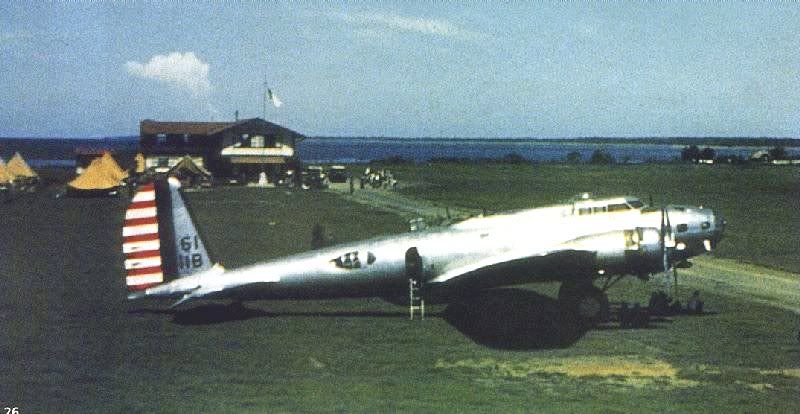 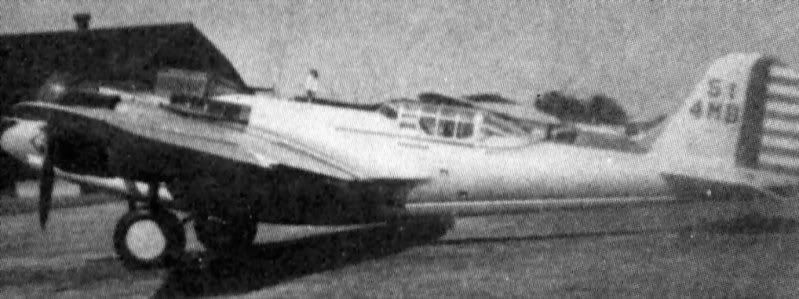 Martin B10 at Nichols Field. The 4M on the tail denotes 4th Composite Group (Philippines). B is for heavy or bomber. P is seen on lighter and pursuit aircraft.  Another B-10 at Nichols. 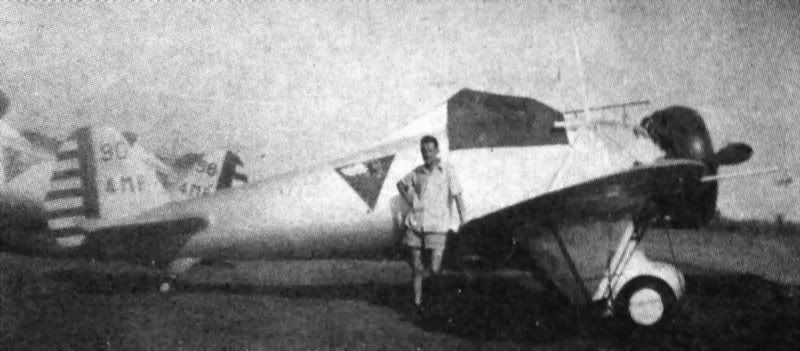 P-26A Peashooter with the 3rd Pursuit Squadron at Nichols Field. By this time the photo was taken, a number of these birds were bieng transitioned to the Philippine Army Air Corps. 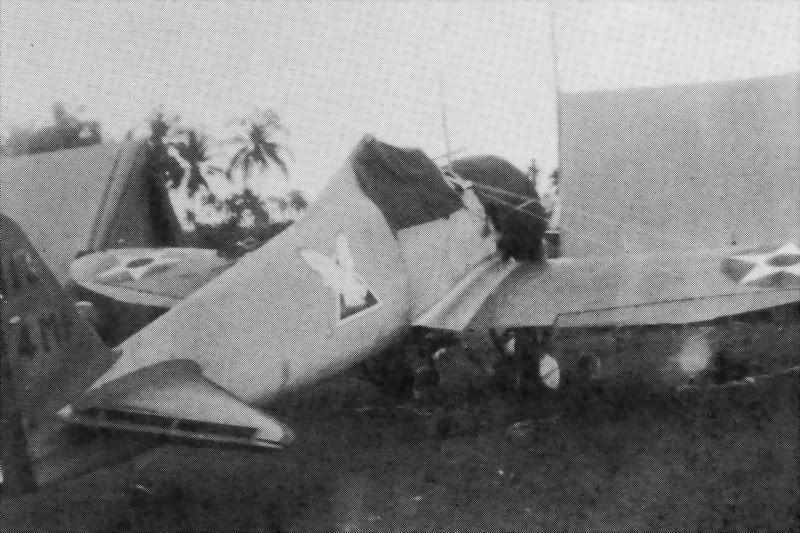 Here is another one flown by the 17th Pursuit Squadron when they were doing gunnery practice at Iba Airfield.  A-27s at Nichols Field. As mentioned earlier these were ex-Siamese orders (Thailand) and shipped to the Philippines. It's basically an armed T-6 Texan. Even the camo colors were painted for the Siamese govt. 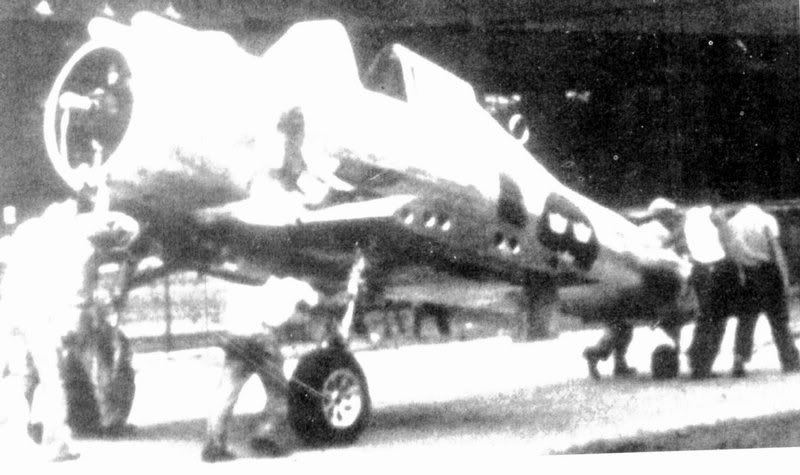 P-35A (ex Swedish order) being uncrated at Nichols. Note the Swedish markings still in the fuselage. 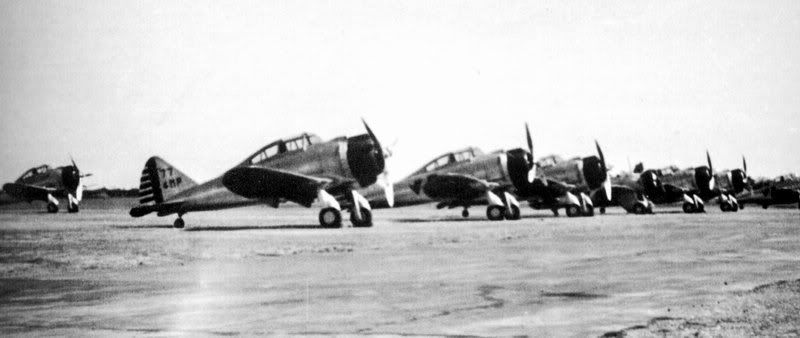 P-35As of the 3rd Pursuit Squadron at Clark Field.  P-35A landing at a wet and soggy Iba Airfield.  P-40B being uncrated at Nielson's airfield which served as the Manila Air Depot. 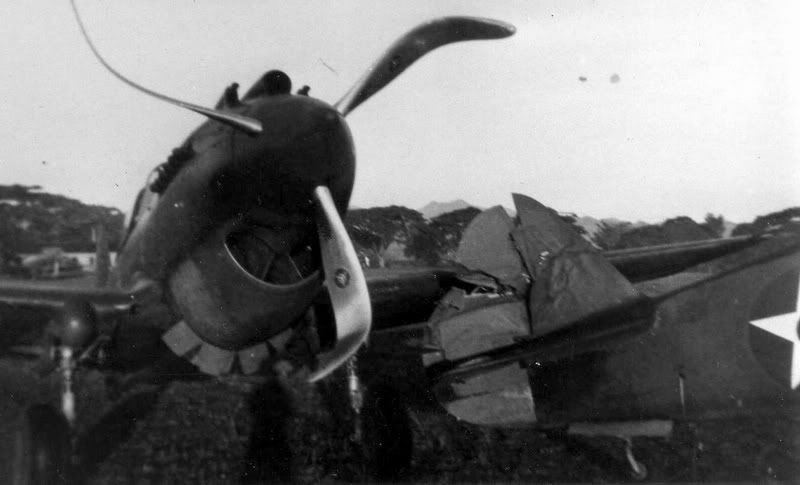 A P-40B that just chewed up another tail of a P-40B at Nichols Field. 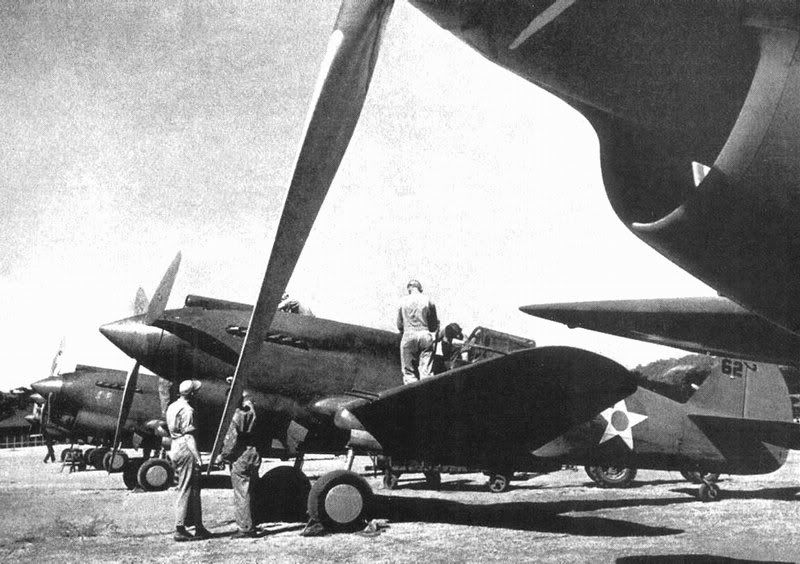 P-40Bs of the 3rd Pursuit at Clark just before hostilities.  B-18 Bolos enroute to Manila  B-18 at Clark  B-18 in a revetment at Clark  Douglas O-46s at Nichols Field  Another O-46s that went belly up at Nichols Field. ...more later... |
|
|
|
Post by batteryboy on Jun 10, 2009 8:26:08 GMT 8
Here's more... 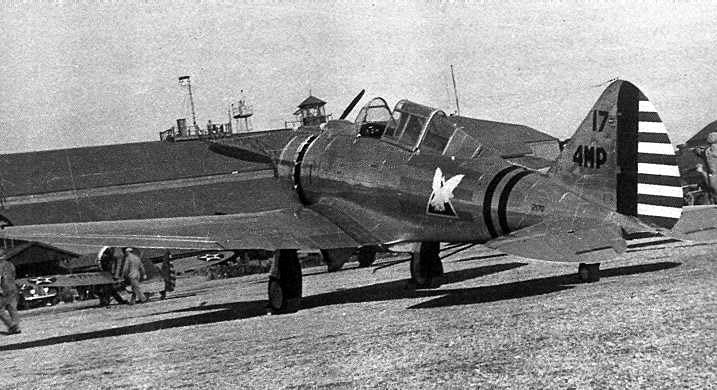 Lt. Boyd "Buzz" Wagner's aircraft. Note the roundels on the wings have not been applied yet as these were ex-Swedish aircraft. Photo taken at Nichols Field. 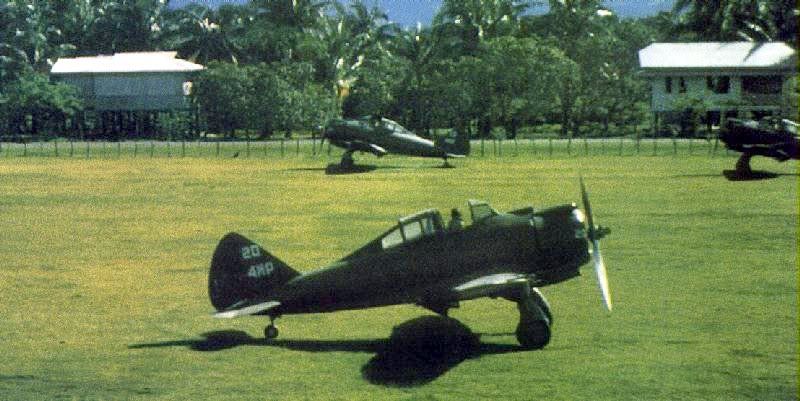 P-35A at Iba Field. 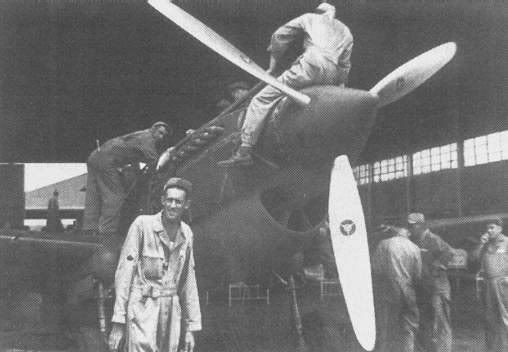 P-40Bs being servied at Nicols Field. Note the twin .50 cals on the nose. 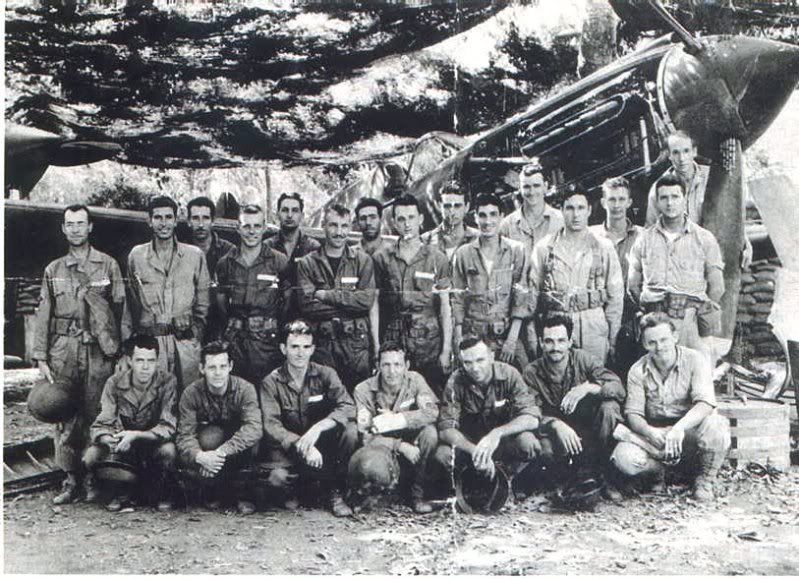 One of the few remaining P-40Es at a camouflaged revetment at the Bataan Airfield. 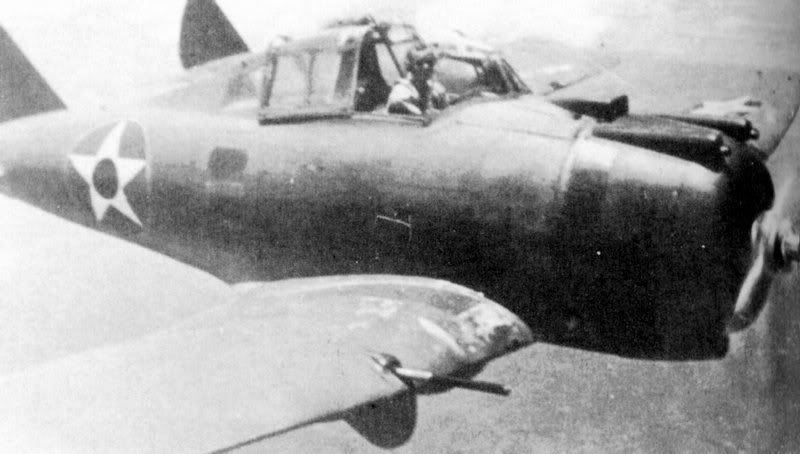 Lt. Lloyd Stinson on a P-35A over the Philippines. 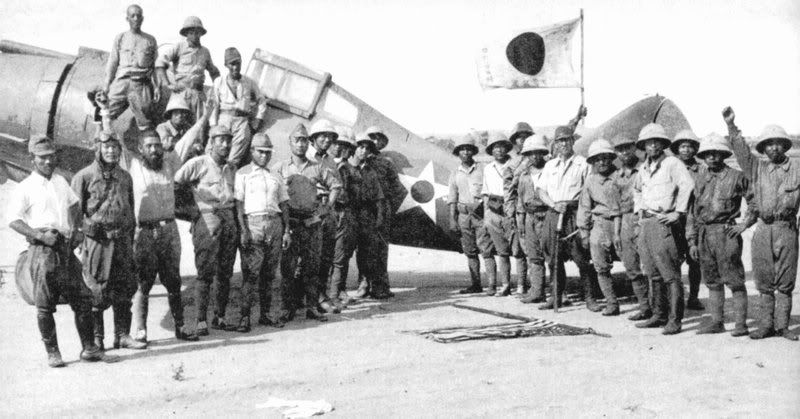 Japanese troops capture a P-35A in the Philippines. 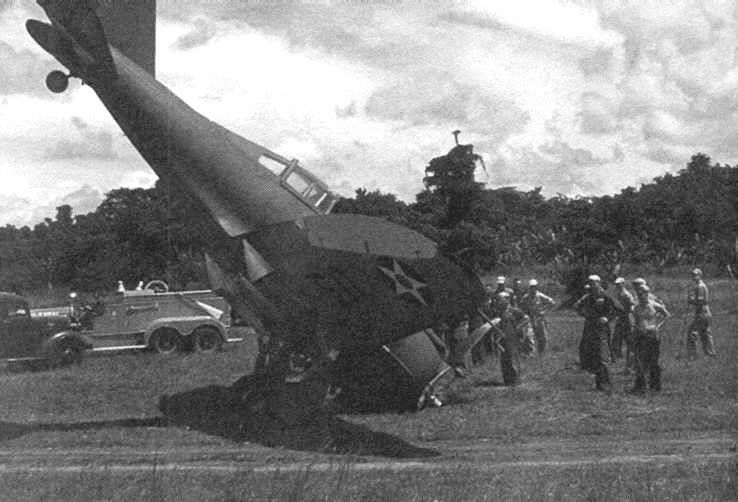 Major Billy Maverick cracking up a P-35A at Clark. 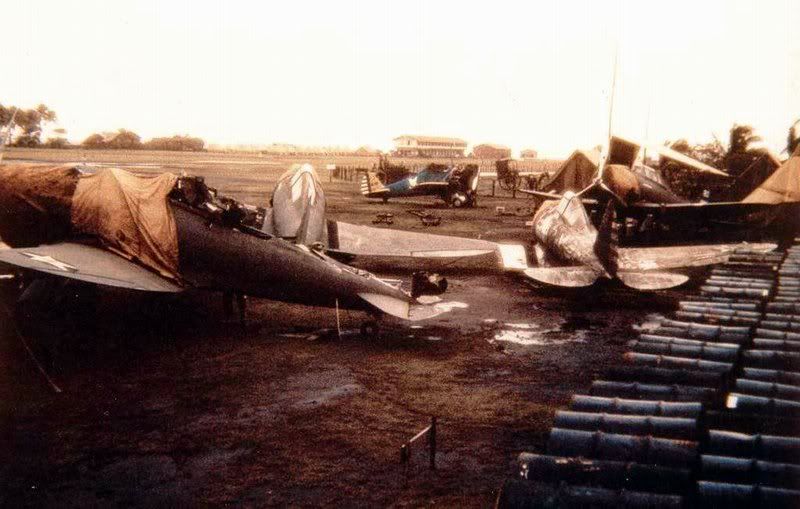 Photo of Iba Airfield. Notice the wrecked P-35As in the foreground. At the back is a P-26A with the 17th PS. ..more again later.. |
|
|
|
Post by The Phantom on Jun 11, 2009 7:17:20 GMT 8
Good lord, there is information then there is information.
I had not viewed most of these planes before.
Batteryboy, you never cease to amaze.
I reserve the right to reexamine and ask more questions later.
Alright just one now.........maybe 2.........
I'm guessing most fighters could not compete with the Zero, especially if parked wing to wing on Clark field.........
I'm thinking of a famous Filipino pilot that shot down some Japanese planes at the beginning of hostilities, what was his name, and which did he fly?
|
|
|
|
Post by batteryboy on Jun 11, 2009 8:07:34 GMT 8
Hi Phantom
No fighter plane can compete with the Japanese Zero head to head in a dog fight in 41-42. The Americans would rather used the boom and zoom tactic (which is to dive at high speed at a higher altitude, shoot up the zero and speedaway and regain height advantage). Reason being is that the early USAAC fighther planes cannot outmanouever in a dogfight but they can outdive the Zero. The Zero's contruction is made of light alloy airframe and it cannot withstand the high speeds in a dive whereas USAAC aircraft are more heavier and could not climb or outurn a Zero. It was only the arrival of the Corsair and the Hellcat in early 43 that started to sway the advantages towards the American pilots as they had aircraft that could equal or even out perform the Zero.
Now going back to the question on the P-40 at Clark, when the airfield was attacked on December 8th, most of the P-40Bs (of the 20th Pursuit Squadron) were caught on the ground) except for three (3) aircraft that were able to take off as soon as the bombs started falling. These were Maj. Joe Moore (C.O.), Lt Randy Keator and Lt. Ed Gilmore. The other pilots who tried to take off were either killed or ditched their aircraft on the last minute as the bombs hit the runway. Of the three pilot who got airborne, Lt. Randy Keator was credited of shooting down the first Japanese aircraft ( a Zero) in the Philippines. Other pilots on other squadron that tangled with Zeros were shocked and narrowly escaped being shot down as they were outmanouvered in a dog fight. They attributed their escape to the ability of the P-40 to take punishment and outdiving their opponents.
The next question is a controversial one: History credits Major Jesus Villamor of the 6th Pursuit Squadron, Philippine Army Air Corp flying a P-26A on December 12, 1941. However this victory is being questioned in the latter years (one of them was me). Then he was credited of shooting down two more aircraft (another Zero) and a G3M "Nell" Bomber. However based on cross checking with official Japanese losses, operational reports, the claims remain doubtful as there was no one to officialy confirm a kill. -- i.e. a wingman or a where the actual aircraft crashed. Mostly speculations. One Filipino pilot who has his kill confirmed was Lt. Jose Kare, when the Zero that he shot down was seen by coastwatchers at Ragay Gulf and the Japanese on the same day (December 22, 1941) confirmed the loss of a Zero over the area on that day.
FWIW,
|
|
Deleted
Deleted Member
Posts: 0
|
Post by Deleted on Jun 15, 2009 13:58:19 GMT 8
Mr. Battery Boy,
Wow, this is just what I was looking for.
Salamat Po
|
|
|
|
Post by rickthelibrarian on Aug 4, 2011 21:42:12 GMT 8
Batteryboy,
A lot of those pictures are ones I collected and glad you're able to put them to good use. Several are ones I haven't seen and are very interesting! Thanks for posting!
|
|
|
|
Post by okla on Aug 5, 2011 0:27:24 GMT 8
Hey Battery....You are about the best when it comes to presenting "nitty gritty". You always seem to solve about any question that surfaces on this board when it comes to detailed info. While we are kinda into this area, have you come up with any more "poop from group" regarding a half-way accurate estimate of actual Japanese aircraft losses to Corregidor AA fire. We were talking, at one time about how "destroyed" claims varied so dramatically from "five enemy aircraft shot down for the entire campaign to as many as five destroyed by AA gunners in a single day". If memory serves, you thought that you might be able to peruse some Japanese records. That would be great. Surely the Japanese would "fess up" to how many aircraft they lost to AA fire. No point in lying to themselves, methinks.
|
|
|
|
Post by batteryboy on Aug 6, 2011 14:35:18 GMT 8
Hi Rick, thanks and I know you are also an expert on this and have read your articles.
Okla, I do owe you that information and its been long due. Let me see what I can come up with on the losses (claims by both sides) including tyhe AA gunners on the Rock.
more later...
|
|